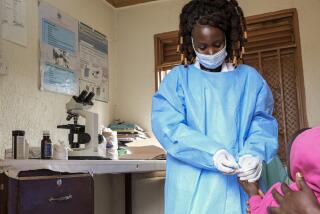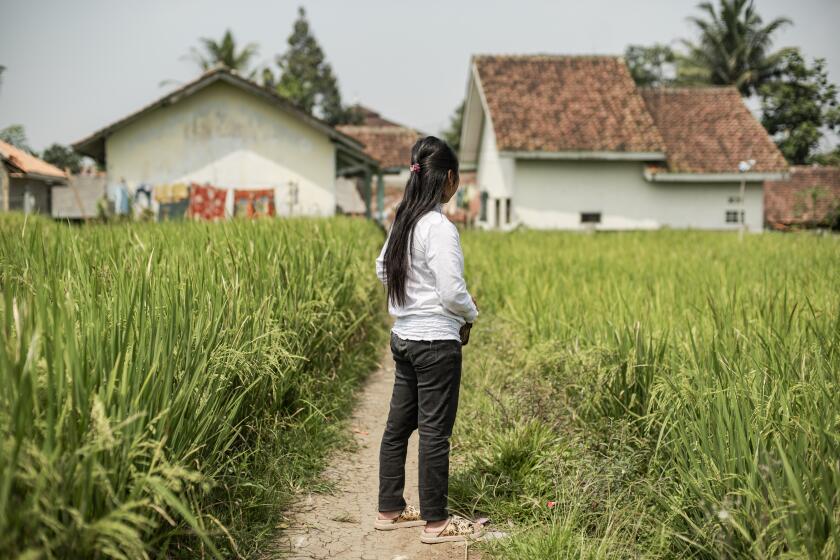Ebola-free: How did Nigeria and Senegal do it?
International health authorities have heralded Nigeria and Senegal as examples of how countries can beat back Ebola.
Both nations reacted quickly when the disease that is still ravaging parts of West Africa showed up within their borders by isolating patients, tracing and monitoring their contacts, and educating the public about how to protect themselves.
Nigeria, Africa’s most populous nation, confirmed 19 cases, seven of them fatal, before the outbreak was brought under control. An eighth death is also considered likely to have been caused by Ebola, but was not confirmed through testing, according to the World Health Organization.
Senegal had only one case, a student from Guinea who recovered and returned to his home country, officials said.
Here are some of the strategies adopted by Nigeria and Senegal in the fight against Ebola.
Travel restrictions
Nigeria and Senegal took different approaches to the question of whether to restrict travel to and from the countries hardest-hit by Ebola: Liberia, Sierra Leone and Guinea.
It was a choice based in part on questions of geography, said J. Peter Pham, director of the Atlantic Council’s Africa Center.
Senegal shares a 200-mile border with Guinea. So when an infected student brought the virus to Senegal in August, the country closed the border and also suspended air and sea contacts with the Ebola zone.
Under pressure from United Nations and other international officials, Senegal later established an air corridor to allow the many humanitarian organizations that have their regional hubs in the country to ferry medical personnel and supplies to Ebola-afflicted countries.
Nigeria does not share a border with any of the hardest-hit nations. Its first case, a Liberian-American financial consultant named Patrick Sawyer, arrived on a plane and collapsed at the Lagos’ international airport in July.
Nigeria’s leading carrier, Arik Air, suspended flights to Liberia and Sierra Leone. But the country did not impose a travel ban, opting instead to screen passengers arriving at its air and sea ports for fever and other symptoms of Ebola.
Coordination
Early coordination was critical in both countries, according to public health authorities.
Within days of Sawyer’s arrival, Nigeria had established an incident-management system that included state and national officials, as well as international experts from organizations such as the WHO and U.S. Centers for Disease Control and Prevention. Local political analysts noted that the central government and opposition-dominated Lagos state authorities were able to set aside their differences and work together in the fight against Ebola.
Senegal’s first patient did not disclose that he had been under surveillance in Guinea for possible exposure to Ebola when he sought care at a Dakar hospital. But health authorities in Guinea alerted Senegal to his possible arrival and he was quickly found, the WHO said.
Detective work
The WHO credits Nigeria and Senegal for quickly identifying those who came in contact with their first patients and closely monitoring them for 21 days. Those who developed symptoms were placed in isolation and their contacts traced.
It was a huge undertaking. In the case of Nigeria, nearly 900 contacts were traced in Lagos and the southern oil hub of Port Harcourt. Specially trained case workers monitored them twice daily, conducting about 18,500 face-to-face interviews, according to a report by the CDC.
By contrast, Pham said, public health officials have been keeping tabs “rather loosely” on most of those who came into contact with Ebola patients in the United States. He cited the example of a nurse who was allowed to travel by plane with a low-grade fever before being diagnosed with Ebola, as well as a lab technician who went on a cruise while being monitored for possible exposure but tested negative for the virus.
The African approach is “a bit of an imposition,” Pham said during a conference call Tuesday organized by the Foreign Policy Initiative, a Washington think tank. “But better safe than sorry.”
Public awareness campaigns
Nigeria and Senegal launched major public awareness campaigns to educate their citizens about Ebola, encourage the sick to seek treatment and dispel dangerous rumors.
Information was communicated in multiple languages via radio, television, social media, text messages and a large electronic billboard in the center of Lagos.
In Nigeria, teams were dispatched to about 26,000 households near people who may have been exposed to the virus, the CDC said.
Senegal encouraged public cooperation by providing assistance to those who had come into contact with its patient in the form of money, food and counseling. The government also sought to protect their identities along with that of the patient.
“They didn’t turn them, if you will, into pariahs,” Pham said. “It’s the right thing to do, but also good policy.”
For more international news, follow @alexzavis on Twitter
More to Read
Sign up for Essential California
The most important California stories and recommendations in your inbox every morning.
You may occasionally receive promotional content from the Los Angeles Times.











